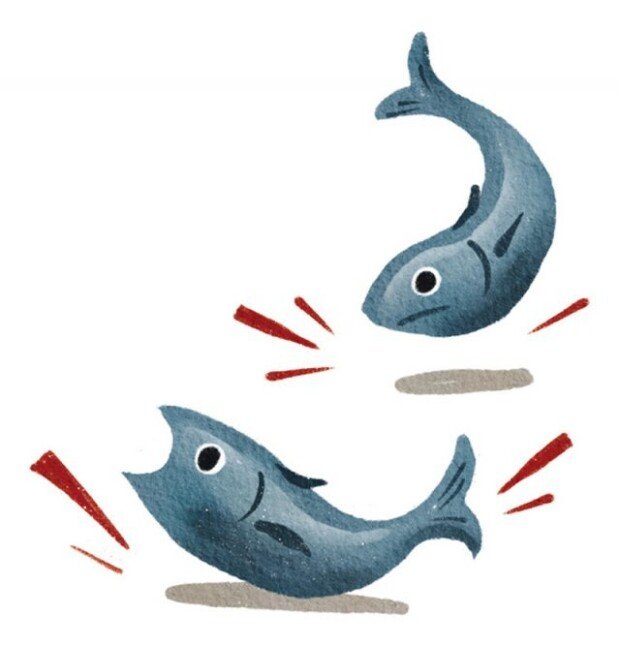Flesh wooden percussion
Flesh wooden percussion
Posted October. 22, 2022 07:42,
Updated October. 22, 2022 07:42

There are wood-carved fish in temples on mountains. You would wonder when you see a large wooden fish swaying in the wind: What is a fish doing in the middle of the forest? What does a fish have to do with Buddha? Some link to the old fish legend, and it is also said that it means you should keep devoting yourself to Buddha without flinching your eyes like the fish. When this wood-carved fish wears out and its surface smoothed out, it becomes the moktak (wooden percussion) we know. This means that the moktak that the monks tap came from a fish in the distant sea a long time ago.
And the following may explain the reason why. When we look at moktak, we think of fish, but poet Bae Han-bong offers a similar yet completely different idea. He conjures up a flesh wooden percussion about fish, not a moktak or a wooden percussion. In the early morning at the fish market, fish are caught and brought onto the shore and flicking vigorously. When a fish makes a sound while twitching its whole body on the ground erratically, it is as if my body is beaten against the moktak. The most miserable moment in life is the most painful moment, yet the moment a desire for life is most sought after, so there is not much you can do other than making these futile moves. The fish has no choice but to wriggle as if its life depends on it. The poet did not choose to describe the fish-fluttering dawn as a lively market or a gushing vitality, for he saw himself in the writhing of its body as the fish twists and turns on the ground.
We saw fish in this poem, but not just fish. Instead of the fishy smell, it is filled with the smell of tears, the smell of people, and the smell of sweat. Even though I came across the word "yuktak” (flesh wooden percussion) for the first time today, I feel like I have already studied and become acquainted with it a bit. It may sound like a story that belongs to someone else, but after all, it is our portrayal. This is what poetry is, essentially.





![[단독]“男 군대가니 女도 가라는 식으로 여성징병제 문제 못풀어”](https://dimg.donga.com/c/138/175/90/1/wps/NEWS/IMAGE/2025/12/08/132907201.1.jpg)

